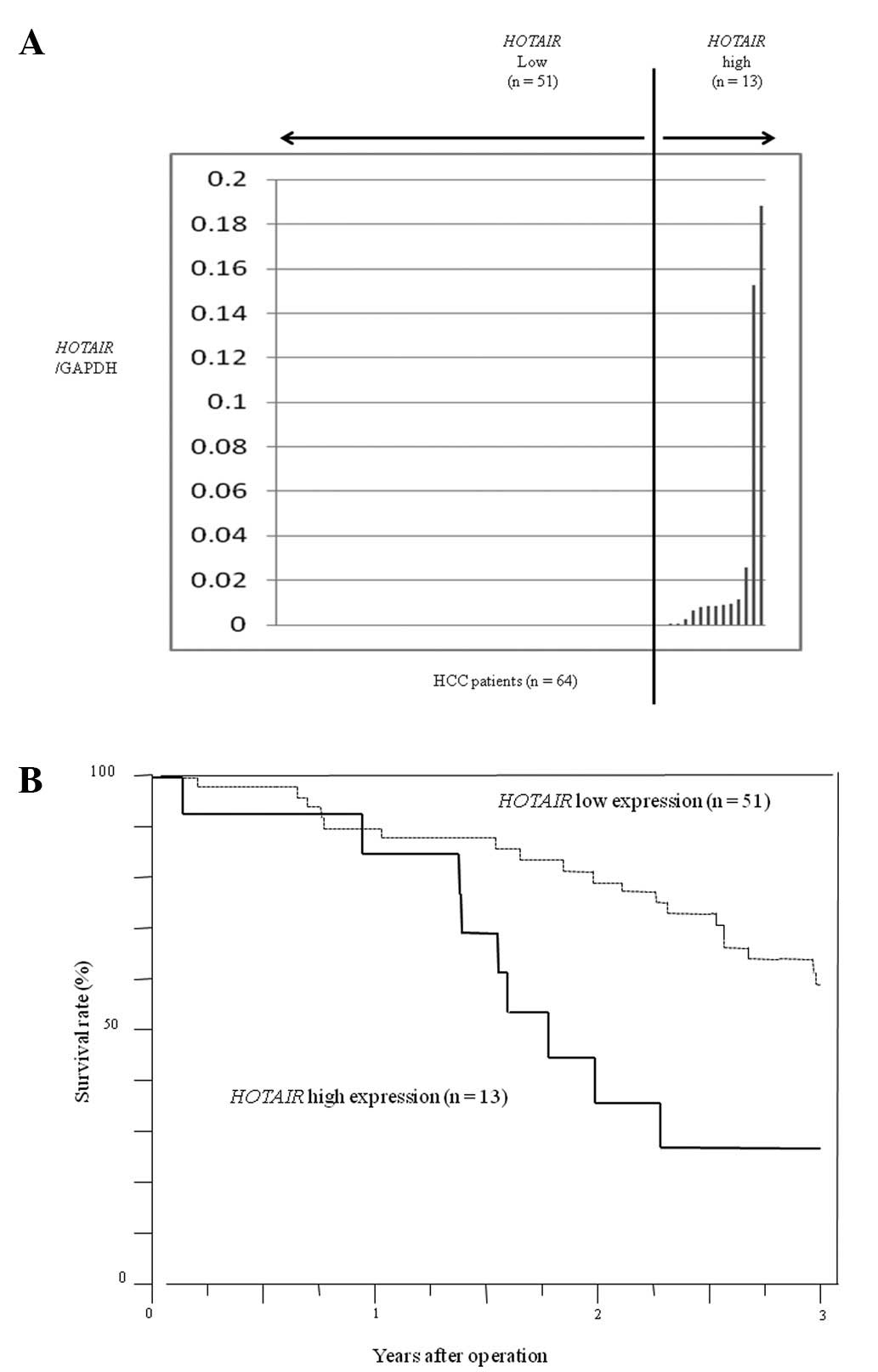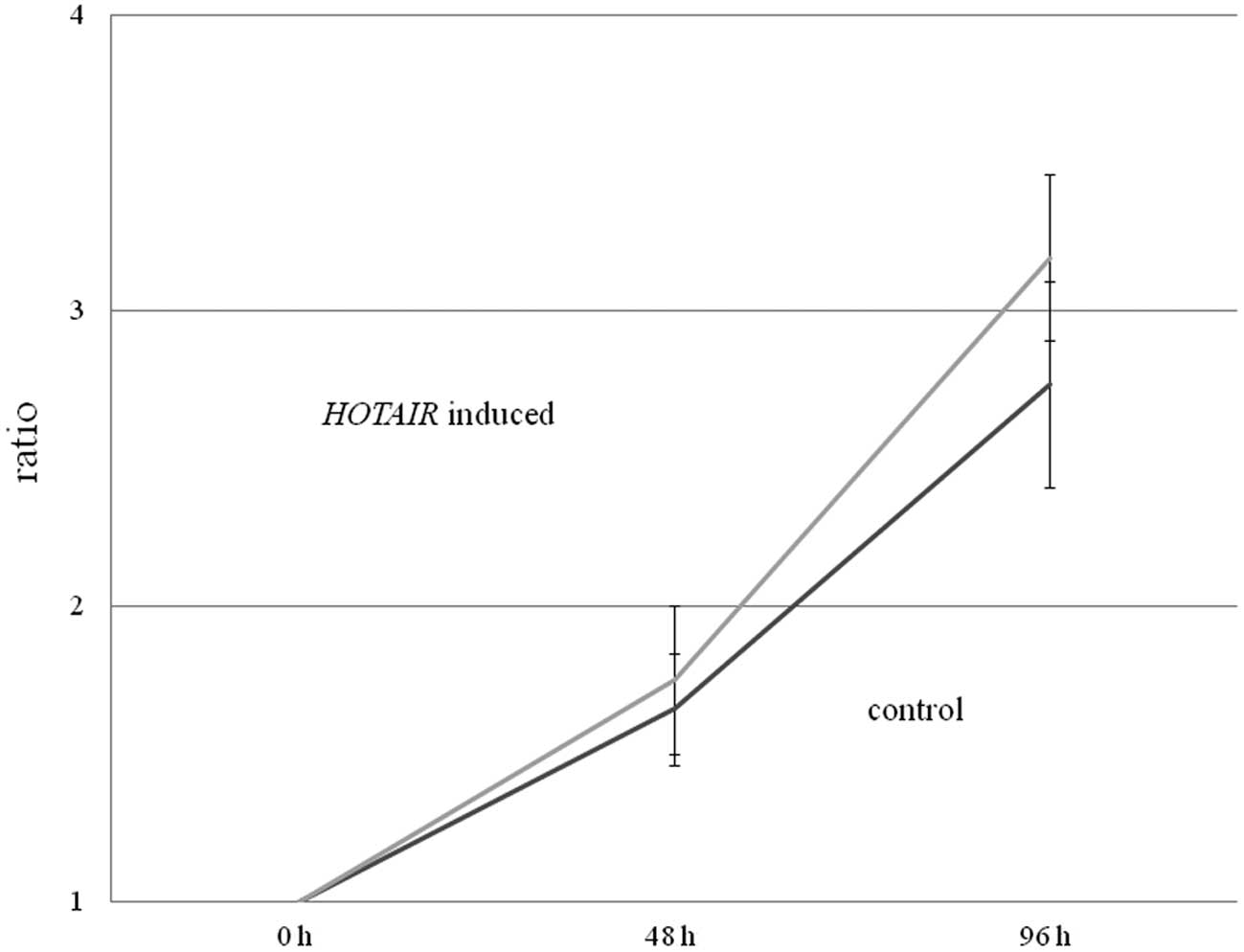Clinical significance of the expression of long non-coding RNA HOTAIR in primary hepatocellular carcinoma
- Authors:
- Published online on: December 28, 2012 https://doi.org/10.3892/or.2012.2219
- Pages: 946-950
Metrics:
Total
Views: 0 (Spandidos Publications: | PMC Statistics:
)
Total PDF Downloads: 0 (Spandidos Publications: | PMC Statistics:
)
Abstract
The functions of many long non-coding RNAs (ncRNAs) in human cancers have not yet been elucidated. The long ncRNA HOTAIR is expressed from the developmental HOXC locus located on chromosome 12q13.13. Previous reports have demonstrated that HOTAIR associates with chromatin modifications in cooperation with the Polycomb complex PRC2, and promotes breast and colorectal cancer metastasis. In this study, we examined the clinical significance of HOTAIR expression in patients with hepatocellular carcinoma (HCC). HOTAIR expression was detected in primary HCCs in 13 out of 64 patients. Patients with HOTAIR expression had significantly poorer prognoses and a larger primary tumor size than those without HOTAIR expression, similar to studies in breast and colorectal cancers. Moreover, introduction of human HOTAIR into liver cancer cells revealed that HOTAIR promoted more rapid proliferation compared to control cells. Thus, although the clinical significance of HOTAIR expression in HCC may not be as pronounced as that in breast and colorectal cancers, the current study demonstrates that HOTAIR expression is associated with HCC progression, warranting further studies.













